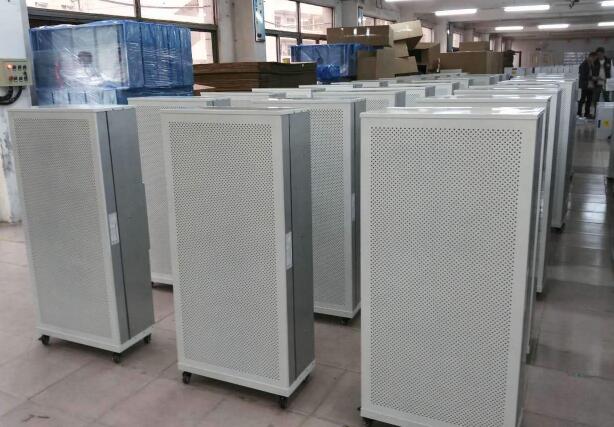Comprehensive Guide to Fan Filter Units (FFUs): Types and Specifications
Fan Filter Units (FFUs) are critical elements for maintaining air quality in controlled environments such as cleanrooms. This guide explores the different aspects of FFUs, from airflow classifications to structural and control options.
Airflow Classifications
FFUs are classified based on the volume of air they handle, accommodating specific CleanRoom requirements:

| Airflow | Application |
|---|---|
| 500 m³/h | Suitable for smaller, less demanding environments |
| 1000 m³/h | Ideal for moderately sized spaces |
| 1500 m³/h | Used in larger cleanrooms |
| 2000 m³/h+ | Designed for large-scale operations |
Design Insight: Deiiang™, under the leadership of product designer Deiiang Jason.peng, offers customized FFUs configured to match precise airflow specifications.
Structural Types
Integral FFU
Features an all-in-one design with the fan and filter housed together, offering higher airtightness, lower noise, and reduced vibration.
Split FFU
The fan and filter are separate, facilitating easier installation and maintenance. Filters can be replaced without disassembling the entire unit.
Motor Types
- AC Motors: Traditional motors widely used in FFUs; while cost-effective, they generally yield lower energy efficiency and higher noise levels.
- DC Motors (Brushless EC Motors): Known for energy savings, precise control, and low noise. Although they have a higher initial cost, they provide long-term savings.
Example Application: FFUs with brushless EC motors deployed by Deiiang™ deliver superior energy efficiency and quiet operation, fitting perfectly within high-demand CleanRoom environments.
Control System Types
Manual Switches
Basic control options like low, medium, and high-speed settings
Bus Control Systems
Advanced management through BUS interfaces
Touchscreen Controls
Precise speed adjustments and monitoring
Additional Considerations
- Standard vs. Custom Sizes: Customization is often necessary for unique project requirements
- Filter Type: hepa and ULPA filters provide different levels of filtration efficiency
- Noise Levels: Crucial in sensitive environments like laboratories
- Energy Efficiency: The choice of motor and control systems greatly influences energy usage
Common Questions and Answers
Q: What is the benefit of an integral FFU design?
A: It offers higher airtightness and efficiency, resulting in lower noise levels and better contaminant control.
Q: How do DC motors in FFUs improve performance?
A: They increase energy efficiency, reduce noise, and provide precise airflow control.
Q: Why is customization important for FFUs?
A: Customization allows FFUs to meet the specific functional and environmental needs of different cleanroom applications.
Conclusion
Choosing the right FFU involves understanding the interplay between design, motor efficiency, control systems, and specific cleanroom requirements. Innovations from Deiiang™, guided by the expertise of Deiiang Jason.peng, ensure customizable solutions that meet varied requirements while maintaining high energy efficiency and operational integrity.
 +86 18186671616
+86 18186671616 Jason@cleanroomequips.com
Jason@cleanroomequips.com
 MENU
MENU



